NASA satellites have revealed that the mesosphere -the layer of the atmosphere some 30-50 miles above our heads- is COOLING and contracting.
Using decades of data and a number of satallites, a team at NASA have identified a cooling mesosphere.
"We had to put together three satellites' worth of data," said Scott Bailey, atmospheric scientist at Virginia Tech in Blacksburg, head of the new research, published in the Journal of Atmospheric and Solar-Terrestrial Physics.
"You need several decades to get a handle on these trends and isolate what's happening," continued Bailey, who goes on to blame the usual "greenhouse gas emissions" for the observed changes -well how else would they have obtained funding- however, Bailey also mentions "solar cycle changes, and other effects".
Together, the satellites provided about 30 years of observations, indicating that the summer mesosphere over Earth's poles is cooling four to five degrees Fahrenheit and contracting 500 to 650 feet per decade.
This cooling and contracting hasn't come as a surprise.
For years, "models have been showing this effect," said Brentha Thurairajah, a Virginia Tech atmospheric scientist who contributed to the study. "It would have been weirder if our analysis of the data didn't show this," she added.
NASA's groupthink (aka consensus) goes like this:
Since the mesosphere is much thinner than the part of the atmosphere we live in, the impacts of increasing greenhouse gases, such as carbon dioxide, differ from the warming we experience at the surface.
"Down near Earth's surface, the atmosphere is thick," said James Russell, a study co-author and atmospheric scientist at Hampton University in Virginia. "Carbon dioxide traps heat just like a quilt traps your body heat and keeps you warm." In the lower atmosphere, there are plenty of molecules in close proximity, and they easily trap and transfer Earth's heat between each other, maintaining that quilt-like warmth.
That means little of Earth's heat makes it to the higher, thinner mesosphere. There, molecules are few and far between. Since carbon dioxide also efficiently emits heat, any heat captured by carbon dioxide sooner escapes to space than it finds another molecule to absorb it. As a result, an increase in greenhouses gases like carbon dioxide means more heat is lost to space — and the upper atmosphere cools. When air cools, it contracts, the same way a balloon shrinks if you put it in the freezer.
Crucially, these decreasing temperatures in the upper atmosphere are beginning to penetrate the lower atmospheric layers (such as the troposphere-where us humans reside) — a fact NASA is sidestepping.
Since 2016, global tropospheric temperatures have been falling off the proverbial cliff.
The two charts below show the calculated linear annual global temperature trend for the last 5, 10, 20, 30, 50, 70 or 100 yr period.
The first chart shows the satellite temperature trends for the top-cited UAH and RSS datasets:
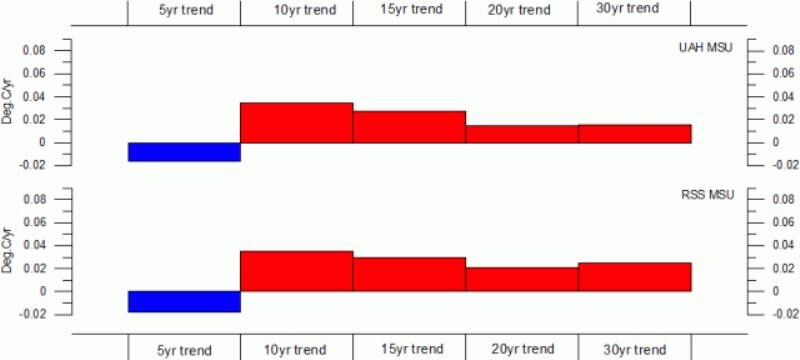
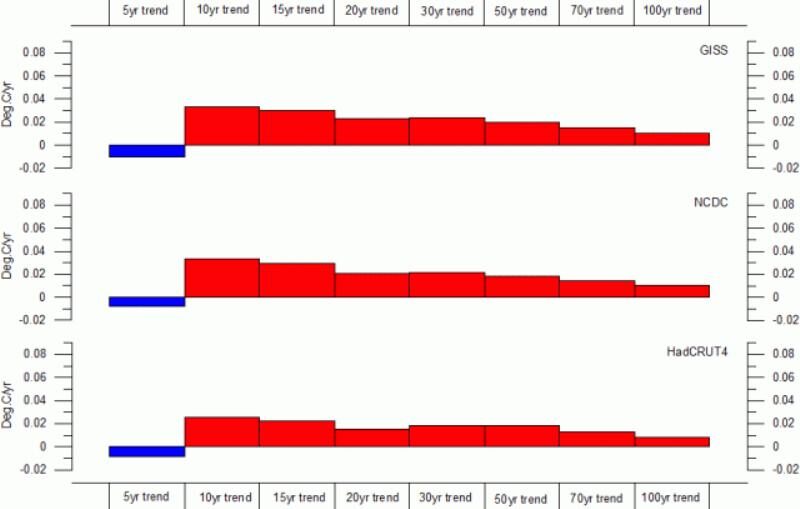
The likes of NASA can blame a cooling mesosphere on increasing CO2 emissions till the fluffer-doodling cows come home, but how do they explain a cooling troposphere — it goes against their entire hypothesis...?
'Global warming' dogma is the cornerstone of every bit of climate research -the powers that be couldn't possibly have a natural atmospheric phenomenon occurring without blaming humans someway, somehow- but low solar activity, as the lead research of this new paper himself admits, is a cause — and it is the leading cause.
This observed and ongoing temperature drop was entirely predicted by those who study the Sun, but I'm sure it has come as a complete surprise for all those on the fact-lacking diet of AGW propaganda.
A first, the sheeple said such a temperature drop was impossible due to ever-increasing CO2 emissions.
Now, they are saying the drop doesn't represent climate as it is only 5 years.
By the time these parroting no-nothings acknowledge a cooling trend, it will already be well-upon us — it will take the grand failure of harvests for the penny to drop — it will take empty grocery store shelves and government rationing — and even then, they will still believe that is was "catastrophic global heating" what did it...
NOCTILUCENT CLOUDS (NLCS)
One way a cooling mesosphere can be spotted on the ground is via the prevalence of noctilucent clouds (NLCs)-aka night-shining clouds.
These past few weeks, NLCs have been spilling of the Arctic Circle to cover more than half of Europe...
...as well as North America:
Noctilucent clouds are frosted meteor smoke.
They form in summer, when the mesosphere has all three ingredients to produce the clouds: water vapor, very cold temperatures, and dust from meteors that burn up in this part of the atmosphere.
For NLCs to form, extremely cold temperatures -as low as -150F- are required.
This frosted meteor smoke is always more prevalent during solar minimum conditions, explains Dr Tony Phillips, when there is less solar energy heating the extreme upper atmosphere — and, with the Sun still struggling to escape the grip of its deepest solar minimum of the past 100+ years, this goes a long to explaining these low latitude sightings.
There has been a steady long-term upward trend to NLCs:
Not all that long ago, NLCs were confined to the Arctic, but in recent years they've been spreading unusually-far south with sightings in London, Paris, Rome and Los Angeles as record cold penetrates the mesosphere.
As discussed above, this cooling in the mesosphere is now penetrating the lower atmosphere.
It's a runaway train from here.
Next stop, Little Ice Age...
It's Getting Harder and Harder to Maintain the Lie: Global Temperatures Sink Further in April
The COLD TIMES are returning, the mid-latitudes are REFREEZING, in line with the great conjunction, historically low solar activity, cloud-nucleating Cosmic Rays, and a meridional jet stream flow (among other forcings).
Both NOAA and NASA appear to agree, if you read between the lines, with NOAA saying we're entering a 'full-blown' Grand Solar Minimum in the late-2020s, and NASA seeing this upcoming solar cycle (25) as "the weakest of the past 200 years", with the agency correlating previous solar shutdowns to prolonged periods of global cooling here.
Furthermore, we can't ignore the slew of new scientific papers stating the immense impact The Beaufort Gyre could have on the Gulf Stream, and therefore the climate overall.
Prepare accordingly — learn the facts, relocate if need be, and grow your own.
Social Media channels are restricting Electroverse's reach: Twitter are purging followers while Facebook are labeling posts as "false" and have slapped-on crippling page restrictions.
So, be sure to subscribe to receive new post notifications by email (the box is located in the sidebar >>> or scroll down if on mobile).
Please also consider disabling ad blockers for electroverse.net, if you use one.
And/or become a Patron, by clicking here: patreon.com/join/electroverse.
The site receives ZERO funding, and never has.
So any way you can, help us spread the message so others can survive and thrive in the coming times.
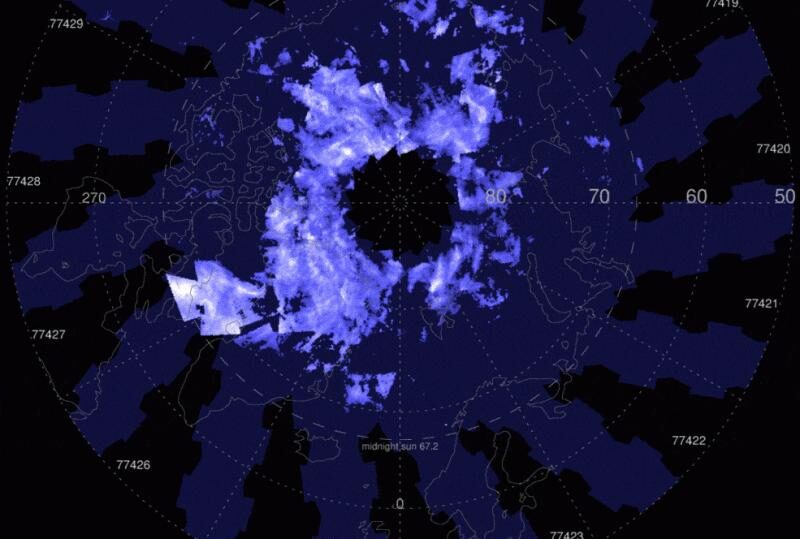
![Click to enlarge The layers of Earth’s atmosphere [NASA].](/image/s30/613299/663007main_upper_atmosphere_gr.jpg)
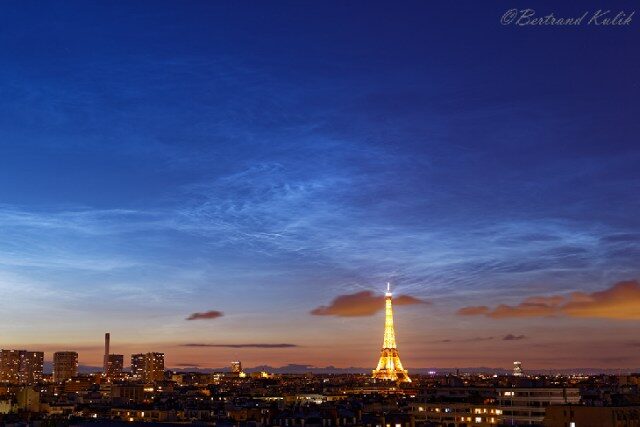
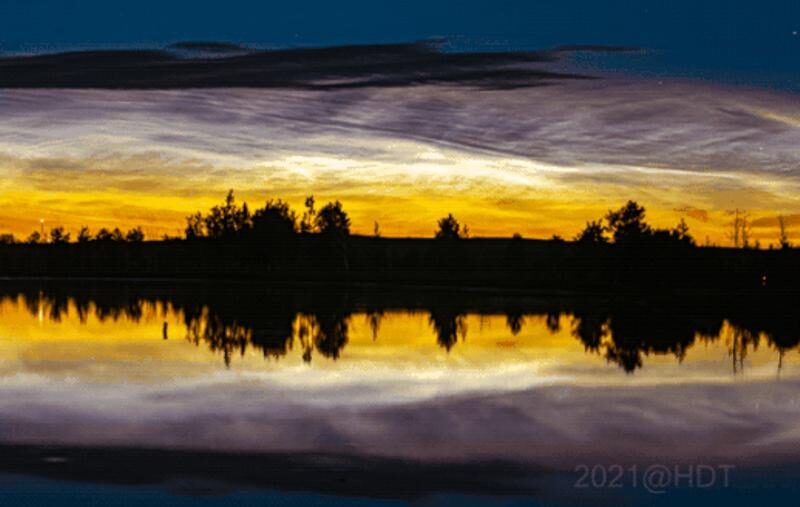
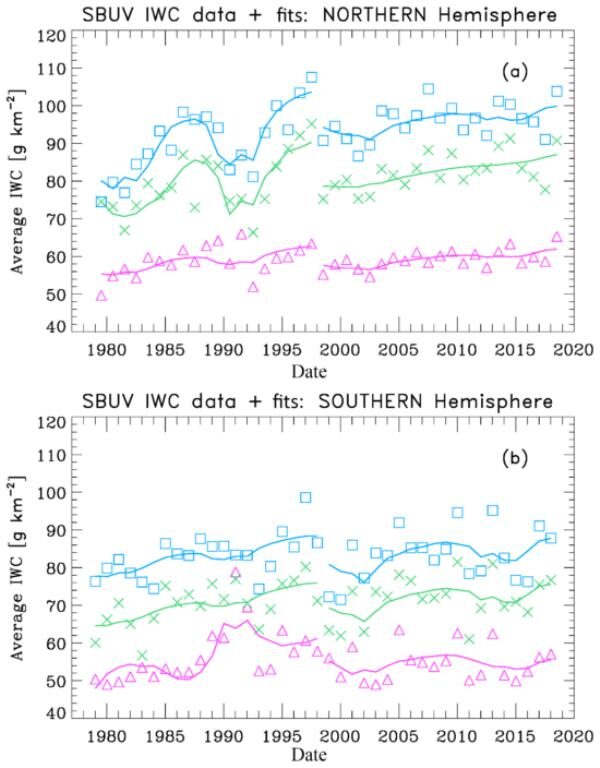
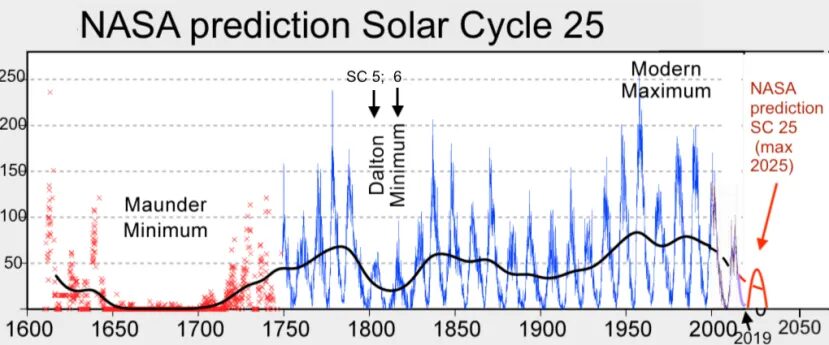
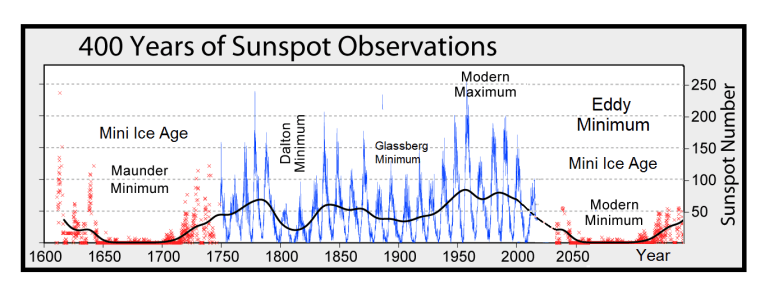



Comment: These SOTT articles on noctilucent clouds are from just last month:
- Noctilucent Clouds observed from Granada, southern Spain, for first time
- Major outbreak of noctilucent clouds over SOUTHERN Europe, as night-shining clouds AGAIN appear at record-low latitudes
- Rare 'night shining' clouds put on a dazzling display across Calgary, Alberta
As explained in Pierre Lescaudron's book, Earth Changes and the Human-Cosmic Connection: See also: Chemtrails? Contrails? Strange skies